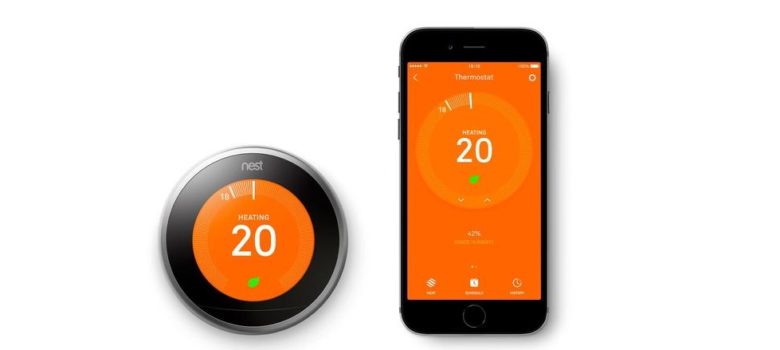
Are the old dial thermostats destined for the scrapheap?
For most of us, the room thermostat is a simple dial on the wall that allows you (in theory at least) to control the temperature of the home. I say ‘in theory’ because during our home surveys we go into a great number of homes who actually have their thermostats turned up to 300c, but the house very rarely gets anywhere near that sort of temperature.
The downsides of a classic room thermostat
Now – don’t get me wrong, thermostats are a fantastic invention, but they are pretty limited. We go into homes where the thermostat is situated right by the front door. It is exposed to an almost constant stream of cold air, which means that the thermostat is will invariably send a signal to the boiler to fire up since it is recording the ambient temperature as very low.
>>> Is the Nest thermostat all its cracked up to be? <<<
One of the other most obvious downsides of thermostats is their inflexibility – a dial on the wall is not exactly the most efficient way to control the temperature of a home with 10 radiators. It is also incredibly manual – you need to move the dial each time you want to adjust the temperature.
Our independently commissioned research also shows that achieving the desired temperature for everyone in the household is a tough ask – in fact constantly moving the thermostat dial and changing habitable room temperature frequently sets off bickering in the home.
So, how do you go about managing all these demands effectively?
Intelligent heating controls – the smarter way to heat your home is here!
A new breed of thermostat and heating control is available for the home – one that will allow for the busy modern life; varying temperatures between the outside and inside; variability between rooms and some will even learn about your habits too!
So if you have an old thermostat – like the one you can see in the picture to the right, you may be better off replacing it today!
What is the best intelligent heating control system for me?
There are a few different intelligent heating systems available, so in the rest of this blog we are going to look at each of those available and try and draw out the key features and limitations of each based on their basic functionality, intelligence and zoning capabilities (ability to heat different parts of the house to different temperatures) – hopefully this will give you some decent insight to shape your purchasing decision.
What are the current comparable intelligent heating control products on the market?
There are a few really intelligent heating systems available – of which you will have probably heard of some – Nest – which was recently bought by Google and Hive from British Gas, which is currently getting heavily advertised, in the British press. Others are the Heat Genius and the Honeywell evohome, so scroll down to read more about them. We like Netatmo products.
>>> What about Heat Genius, Owl, Heatmiser, Insteon and the Lyric thermostats? <<<
We know that there have been other intelligent heating systems released since we first wrote this – to get our take on them, click on the link above.
Nest Intelligent Thermostat
At the beginning of 2014, Google bought out Nest for a whopping £2billion – at which point their only product was the Nest Intelligent Thermostat and Nest Protect, a speaking smoke alarm. This suggested to us at least, that intelligent heating controls have a hugely bright future. The product is now available in the UK, following the announcement in April 2014, whereby Nest is also closely working with NPower to target the distribution to some of their energy customers.
Essentially the Nest Intelligent thermostat is like your existing thermostat albeit a very advanced version. On the simplest level, you can move swipe your finger over the touch sensitive screen to change the temperature up and down like a traditional thermostat.
Once installed, the Nest Intelligent thermostat will begin to learn your heating patterns as you manually change them over the first couple of weeks and develop an auto – schedule to automatically do this going forward.
The thermostat also has temperature, humidity, activity and light sensors behind the sensor window, to help it react more intelligently to changing conditions, for example it will turn off the heating when it notices you have left the home to help save on your heating bills. It will also take into account the impact of direct sunlight falling on the unit and still read and set the correct temperature.
In addition the thermostat can also be remotely controlled – having the capability to work with both Apple and mobile Android software, so on your tablet, computer and phone you can check usage and operate it away from your home. The great thing about the nest is that it has the capability to communicate with the broadband router without an additional ‘dongle’ that many of the other intelligent heating systems have. This means you only need the two units – the thermostat itself and the receiver that plugs directly into the boiler.
The product itself is quite easy to install, if you have some experience of changing a light fitting or performed basic electrical DIY in the house. At the moment there is a really easy to follow ‘how to’ video on the Nest website, but this is designed for the US market – although a UK version should follow shortly shortly.
The are two downsides to the Nest thermostat – the first is that it will only control the hot water that is used to heat your home, not the hot water the comes out of the taps (which is an issue for heat only boilers). The second is that it needs to be plugged in to an electrical circuit at all times, there is no battery backup.
It currently retails at £220 and you can buy it here.
The British Gas Hive
Next on the list is the Hive Intelligent heating system from British Gas. If you live in UK, I am sure you will have seen all the press coverage for this product – British gas are obviously keen to exploit the gap in the market before the Nest makes its way over to these shores!
So, the actual hardware is sold as part of the ‘Hive Active Heating Kit’, which essentially includes the following items: the receiver which is installed by an engineer to the boiler; a wireless thermostat; a hub box that plugs into your broadband router that allows you to control the wireless thermostat with a computer app.
The Hive app, just like all the other intelligent heating control systems allows the household to control their heating remotely from any part of the country (internet signal permitting). So if you happen to be out and about and want to get home to a toasty warm house, then you simply log into the software on your phone – both Android and iPhone, and turn up the heating.
In the end the Hive is ultimately a thermostat that limits heating to one zone. It is also not smart like the Nest, so apart from the anti-frost control it doesn’t track the heating habits of the home and all the settings are adjusted manually.
>>> Our Detailed review of Hive <<<
So, although the Nest Intelligent Thermostat is not yet available in UK, were it to be offered at a similar price as the Hive, we reckon the Hive would struggle to compete with it on pure functionality. However this being the first model, we anticipate that further releases down the line will address some of these initial functionality shortfalls.
The one big advantage of the Hive over the Nest is that you can control the hot water using the system, so for those with a Heat Only boiler (i.e. a hot water tank), this might be a welcome addition.
It’s currently on sale for £215 on Amazon.
Tado
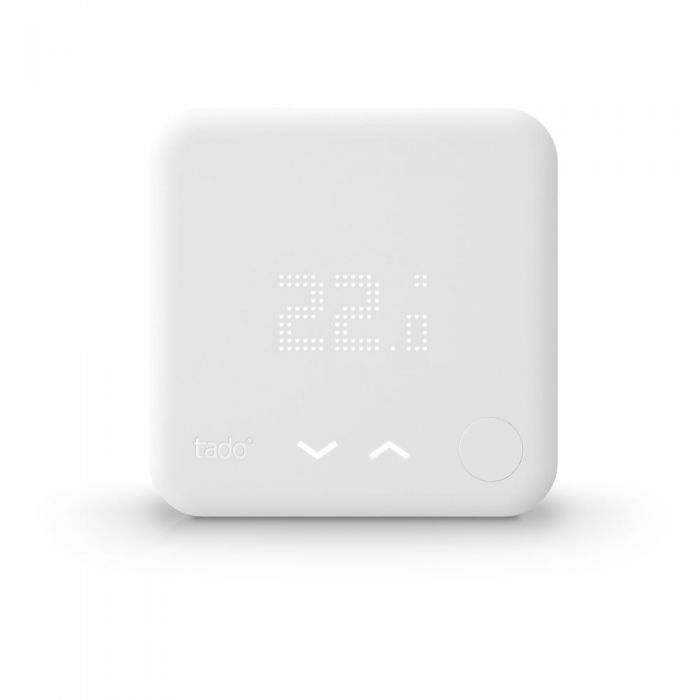
The Tado is a fairly neat and straightforward system allowing you to control the temperature and the heating on/off times. The set-up is pretty simple, comprising of three pieces of kit – the Tado box, the Tado connector for your broadband and finally, the temperature motion sensor.
If you have a room thermostat already, you can simply wire the Tado box directly into this. If you don’t have a thermostat then you will need to wire the Tado box directly into the heating system. Most of the existing boilers will be fine to connect to, but if you are unsure refer to the Tado website for more information.
>>> Our Detailed Review of Tado <<<
The Tado connector then slots into one of the usb slots at the back of your router and you are almost ready to go. Finally the temperature motion sensor should be placed in an area that you intend to spend most of your habitable or living time. When this is plugged in, you simply fire up the app on your apple / android system and you are ready to start setting up your heating schedule and target temperature.
From here the device will work like any other thermostat – the heating will come on an off when you tell it to do so and if the room reaches its target temperature the boiler will turn off.
The key issue with the Tado intelligent thermostat is that you need an app to change the heating pattern or set your ‘virtual thermostat’. Unlike the Nest device or Hive systems, there is no way of seeing the temperature on any of the Tado kit supplied – you will need the app working on your phone or table to see this in real time. So, if you feel a little bit uncomfortable with this method then there are other systems you should consider.
One really nice feature of Tado though, is that it has geofencing functionality (like the Honeywell Lyric) – the system will know who is in the house (based on the apps on their phone) and will heat the property accordingly. As soon as everyone has left the property (provided they remember their phones), the boiler will turn down as it will assume there is no one home to benefit from the heating – quite scary, but intelligent nevertheless and maybe the next step in home automation!
It currently retails at £200 and you can buy it here.
Honeywell evohome
Many of our readers will probably be familiar with Honeywell, already having one of their basic Honeywell thermostat installed in their homes. The evohome is certainly an ‘evolutionary’ step away from these old thermostats though, since it allows the user to set up heating zones in their home, all of which can be set at different temperatures to one another for an even greater level of heating control – just like the Hive and Nest, the evohome can also be controlled remotely with a phone app.
The company has tried to fight hard against Nest Intelligent Thermostat in recent years and has been playing catch-up somewhat in this rapidly expanding ‘consumer techy’ market.
The evohome product itself has to be wired to the central heating system. From that you have the central controller, which communicates to both the boiler unit and Thermostatic radiator valves (TRVs) that can be fitted onto the individual radiators in the rooms that you want to control – for each base unit you can create a maximum of 12 heating zones.
The central controller can then be controlled manually or remotely with the right software application. The neat aspect of the evohome controller is that it can be fixed to the wall like your existing thermostat or acts as a standalone like tablet that you can take around the house with you. However unlike the Heat Genius or the Nest Intelligent Thermostat this particular model does not learn user habits.
It is certainly not the cheapest model on the market, starting at £372 for the basic starter pack and the mobile access kit, but this assumes the home is one zone – a bit like your existing thermostat. If you then want to have multiple zones, it works out about £69 per radiator or per TRV purchased.
We know that there have been other intelligent heating systems released since we first wrote this – to get our take on them, click on the link above.
It’s currently on sale for £216 on Amazon.
What do we think about the savings of having an intelligent heating system installed?
Going through various assertions of manufacturers talking about savings of 20% or more – personally we think these are ‘pie in the sky’ figures as it all entirely depends on the fabric and insulation of your existing property. If you have a poorly insulated home for example, then the idea of having a thermostat control the temperature of that are become redundant as in reality that room may never reach the desired level. So actually you are no better off as your existing heating system struggles to keep your home at the temperature that you want.
Also the savings will only result if you actually incorporate behaviours that make you think about the temperature and on-and-off times – and the Heat Genius for example will help you tackle the behaviours point. If you are one of those folks that keeps the thermostat at 300c, then no matter how ‘smart’ your thermostatic control system is, you will struggle to see the savings come through.
Think we missed something? Do you have a different opinion?
Comment below to get your voice heard…
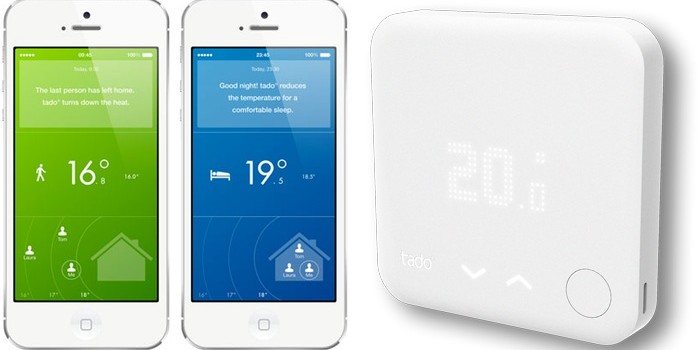
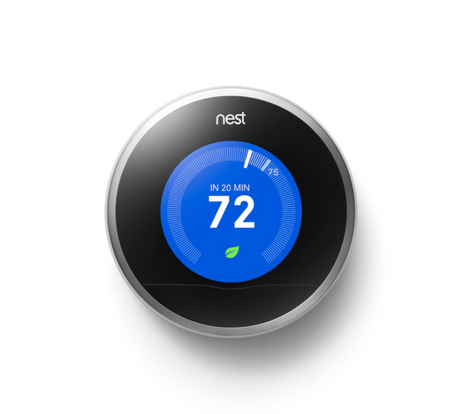
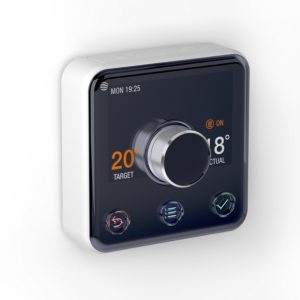
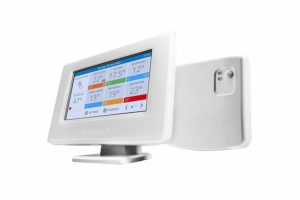












Smart heating control systems have become increasingly popular since the beginning of this, so it’s to be expected that many people will have questions about this new way of controlling heating.
Agree with this line: “savings will only result if you actually incorporate behaviours that make you think about the temperature and on-and-off times”. The whole purpose of these heating systems is to make it easier for household to control their heating. Some systems can learn users’ habits and give them the best options for saving energy i.e. which times heating should be on, which temperatures are best for the home etc.
Will smart heating systems replace traditional thermostats? Only time will tell…
What about the Tado system?
You should always remember that you have to get your costs back first before you start ‘saving’ anything at all. A £400 bill for supplying and installing a ‘clever’ heating management system should, at the very least, save you £40 a year over 10 years…or it has actually COST you money. £40 a year may be 7% of your heating bill. If it doesn’t definitely save you more than this then it’s a worthless piece of plastic on your wall.
The most intelligent heating controller is you.
I think Barry is missing the point. Lets say your annual heating bill is £1200 and it costs £2000 to fit the system. Using Barry analogy it will take a long time to pay for itself.
But if we get say a 20% reduction in energy costs then that is a saving of £240 per annum. That is a nett return of 12% on my £2000 investment. Where else can I invest £2000 and get this type of return, a return that will actually increase every time the fuel prices increase..
Also when one comes to sell the house this type is system makes the house more attractive to potential buyers. It may help sell the house at a better price….or just make the property more attractive to potential buyers over the other houses they are looking at.
If you could get your £2,000 “investment” back, then it would be a 12% return. But it’s a depreciating asset that really needs – for something leading edge and electronic such as this – to be depreciated over five years. At that rate, it’s a negative 8% return.
the argument about intelligent heating is similar to hybrid cars what do you want your system to achieve.some want all electric some want hybrid Lexus. or the Toyota Pios
I started by trying to get basement bedroom warm in the morning. The hot air was shutting off the heating before the bedrooms were warm (delicate wife) i worked out that if I could time the rad valves I could leave the upstairs rooms switched off until the bedrooms were warm. I found a German firm called eQ_3 and using their maxi system I was able to put a wirelessly controlled time and temperature programmable rad valve on my existing trv valve bases by using a wireless hub i was able to program them and control them remotely. i also found that if i put wireless thermostats on the wall in each important room I could get an accurate temperature.Finally i decided to time control all the other minor rooms bathroom , en suite . it cost me about £50 per room with one rad and £75 with 2 rads plus one hub at £54 the minor rooms have non wireless motorized valves at £10 each so my flat cost about £320 in total it was very easy to retrofit by myself. the only aspect not covered is direct communication from the rooms to the boiler so i still rely on the boiler thermostat and clock for some functions . how ever if i was brave i could leave the boiler on continuously and leave it to my new system.but as the object was to save money within the existing parameters. I have left the thermostat and the boiler timing alone. Now None of my rooms is every heated unnecessarily and none exceededs the desired temperature. And they are always comfortable when I am in them. If i need to I can override the system with a comfort or boost command I also have an eco switch by the front door to press if I go out. The whole system can be controlled via the web or phone or tablet it even has a holiday mode. I reckon for me this is about the most cost effective and interesting solution .but someone else might find they could just use the £10 programmable valves . Some one else may want direct response from the boiler there are people who do this but at serious cost .I am 66 and I would never get my money back.
Dear Peter,
I just came across the blog posts and your success with eQ-3. We are trying to do something similar (no BMS/boiler control just flow control with smart valves+temperature sensors) and wondering if I could pick your brain. The posts have no date but hope the topic is still alive and you are around…Alternatively, if you are an eclectic engineer looking for a project, get in touch 🙂
Hi Peter,
I’ve had a look at the EQ-3 system – looks great. Where did you order your components?
Many thanks. Eamonn.
I have to say that I really believe I’ll get my money back. One month ago a I had the Heat Genius system installed and I’m really glad I chose it. I was a bit skeptical at first, as I wasn’t sure how much money you can save unless you are really cold in your own house. But now, because I also have the sensors installed I can see on my phone when a room is heated and when is not and this way I’m saving energy. I think generally speaking, smart thermostats are easier to use and it’s a good way of saving money on the heating bills.
bought a heat genius, but they cancelled my Peter
order because a dared to complain about the level of service I was getting after they took my money then never installed the equipment. poor company with very bad attitude
I’m not sure what went wrong there Bob, but they were really helpful every time I contacted them. From my experience, they are very responsive and professional.
All this about ‘intelligent’ controls, and nothing about whether any of them are an ‘on-off stat’ or a ‘sensor-controller’. The difference being that the latter actually measures the temperature, predicts how much heat is required and then instructs a modulating boiler to turn down the flow temperature to efficiently match the heat demand….? These products, and this article, are nothing more than froth and bubble, if not explained or engineered correctly, and all they are is fancy on-off devices.
I agree. Until the boiler flow temperature can be controlled in response to internal temperatures these ‘smart’ thermostats are highly inefficient and save very little money.
The technology exists, its called Open Therm. However, as of yet it’s poorly implemented by the boiler manufacturers. Valiant being the worst.
When Boiler manufactures start talking to smart thermostat producers to exploit the Open Therm technology is new boilers thats when the real savings will begin.
Once a home reaches optimal temperatures Open Therm modulates ie turns down the boilers output temperatures to maintain the homes temperatures.
This is significantly cheaper then heating a home, switching then the smart thermostat switching the boiler on and off to maintain an ideal temp.
A significant percentage of costs occur in the process of initially heating the water. Once the water, and the system are heated, then to maintain that heat at a much lower water temperature flowing from the boiler is very cheap.
In fact such a method would allow you to keep your heating on all day and pay less then just keeping your heating on for a few hours on the current stop-start smart thermostat paradigm.
Get smart. Demand Open Therm. Many European countries have already implemented it. The Uk is behind the time.
You need to be aware that not all these systems are an ‘investment’ in your home when you come to sell it. Taken from the Hive FAQs:
“If I buy Hive and then move home what should I do?
If you are moving house and have Hive Active Heating™ installed, please leave all of your Hive kit (boiler module, thermostat, hub and any SmartPlugs) at your old house. They form part of your central heating system and must be left for the new occupier.
I’ve moved into a house that has Hive Active Heating™ installed, what should I do?
Firstly unplug the hub from your broadband router but keep it plugged in at the power socket, this help maintain the thermostat’s range in the home. If there is a SmartPlug in the home switch this on too. You’ll be able to control your heating and hot water manually from the thermostat on the wall but you won’t be able to control your heating remotely from the Hive app, online dashboard or by text.
If you’d like to use Hive Active Heating™ to control your heating remotely, you’ll need to buy a new Hive hub”
There are heating controllers more intelligent than that! My current system is able to measure the temperature inside each room and heat each room individually only when it’s used. If there’s nobody in, let’s say the lounge between 10 a.m. and 2 p.m because I’m home alone and work from home in my study, there’s no point heating all rooms and waste energy. I would also like to say that I am trying to conserve as much energy as possible, not only because of our energy bills but I’m trying to do my bit to the environment and give an example to my children. I would also like to say that I am considering moving house sometime next year and I’ve already questioned the guys from Heat Genius (this is where I got my heating control from) regarding what will happen with my system if I move house. I was really pleased to find out that I will be able to take it with me and just re-fit it in my new property. Before I got this system I had looked at other heating controllers, such as EvoHome or Nest, but either the installation process was too long or the system didn’t do what I wanted.
Mary1965, thanks for your contribution. Please share the name and details of the system which you describe.
We do go into the Heat Genius in our other blog on heating controls!
Is there any way I can get a control system for my flat. It has an electric immersion water heater and wall mounted electric heaters with individual thermostsats and timers?
I would have to go with Graham on his explanation here but yep, I get Barry’s point too. Though the systems are useful, you, as the owner, also need to make sure that it works for you by doing your best to conserve on consumption.
I have a two level semi and have apartments upstairs and on the lower level. Both are walk outs. The central furnace for AC and heat are controlled by the upstairs thermostat. How best can I control the AC on the lower level since cold air drops. I was thinking of a temperature sensitive wall (radiant) heater to control the temperature on that lower level. I was thinking of a Nest thermometer for the upper unit but what good will it be when there are two levels?
I used to have the honeywell system, but then I got electric radiators, which are much more efficient, and these can also be controlled by an app too, I got mine from Intelli Heat, who were really helpful. The app also controls my lighting and garage door at the moment as well.
But electricity is 3 times more expensive than gas.
interesting post, thank you. I was wondering though if you know any manufacturer of low cost wifi thermostatic radiator valves which one can program through the wifi lan od the home (69pounds per valve as on the evo system seems to me an overkill)
Hi Paco, there are none that we have come across that are much cheaper to be honest!
I have just ordered five smart TRVs from Reichelt (in Germany) for under 100 UKP which price includes VAT and shipping. It will be interesting to see if I can control them from my iPhone, which they claim is OK.
Paco, i paid alot less than £69 per radiator for my programmable trv’s that i control from anywhere, by smart phone, tablet or p.c., got them from Radmiser ltd, its a whole wi-fi system.
I have recently installed a biomass boiler, and I would love to have it controlled by smartphone technology, however the installer has told me that none of the smart technology will work for a biomass boiler, as it operates differently to how my previous oil boiler operates, e.g. it wants to remain on for a longer time than that of the oil boiler, is this true?
The following statement from the article isn’t true:
” This means that if you have unpredictable weather (the UK for example!) where you have a hot day followed by a cool day you need to change the dial almost on a daily basis.”
Why should one be moving the dial if it’s set to a comfortable temperature?
It’s there specifically to maintain the desired temperature, no matter what external variables are applied.
As most systems rely on thermostatic radiator valves to control room temperature, I fail to see much benefit in the Nest and Hive systems that use a single thermostat to regulate the temperature of a house. Perhaps the greater benefit is to BT and Google who then have access to your behaviour data that they can sell on to 3rd parties.
Evohome uses motorised thermostatic radiator valves and room sensors/controls and there are cheaper models out there. However, when I last looked at this, the technology that is missing is Wi-Fi enabled equipment that is designed to be interoperable so that you can use it with any compatible controller and the controller can be directly accessed from a PC or any mobile device without publishing that you are on holiday for 2 weeks to a 3rd party service.
Hi PJL, anything that helps homeowners keep more on top of their heating is a good thing surely? Not only because it will save them money (it is very easy if you can turn down heating from your phone) but also it helps us use less gas collectively as a nation.
I agree, smart TRV’s are like having a smart thermostat in every room or zone at a fraction of the price & no wiring involved. Have you seen Radmiser now have the Open Window sensors as well? These will turn down the heat on the specified radiator if the window is opened and then turn it up again once the window is closed!! That should make the kids more energy saving aware when their bedrooms get chilly!!
Am thinking about a heating/hot water control system. Present system has a timer on the boiler and thermostat radiator valves. Not happy about leaving system on for 24hour heating as it tends to leave the house too warm. Switching off overnight however tends to make the system work harder to heat up the home especially in colder weather. Am thinking about nest or hive. Would either of these allow me to leave system on all the time but give me the added flexibility of having it at a lower temperature overnight to make it more comfortable and not have it work hard to set up a comfortable environment at all times?
Have a look at Pi Therm.(google it)
You can program it in various ways to give different temperatures throughout the day.
It uses a Raspberry Pi microcomputer which is very inexpensive, compared with proprietary ones
most people have a half decent rad based system. some with TRV and some not. The cost of a SMART system is basically at least £1000 especially if you want a zoned system. Smart-TRVs seem sensible but why oh why do they have to be integrated with another controller. I just want an app (for free) that links to as many smart-wifi-TRVs that install myself, maybe £50-£70 each. Each smart TRV also needs to transmit its battery status. is that too much to ask?
Having clever computerised TRV’s is only half the story. What you need, in addition, is boiler control. When all the TRV’s are warm and off, the system turns the boiler off. When one or more TRV’s is cold and wants heat, the boiler is turned on. Boiler on/ off (heat demand) is generally done by means of the normal thermostat connection (that you’d have used with a traditional old-school thermostat) and as this is a wired interface, you need some way for the wireless TRV’s to talk to it. Hence a central ‘brain’
For those who are looking for water radiator thermostats.
I have recently bumped into this eCozy company dealing with smart heating system and found them interesting. If you want a good an reliable and most importantly smart heating system feel free to check them out. It is a German startup eCozy GmbH. Really high quality staff they have not to mention their design is fantastic 🙂
I would like to monitor cold rooms temerature, where I have 12 cold rooms, 8 Chillers(+4`C) and 8 Freezers.(-18`C).
You need a refrigeration monitoring and alarm system. Plenty systems available on the market
I’ve tried a number of these systems but none of them pass what I (in a rather sexist way!) call ‘The Wife Test’.
My latest trial is with the LIghtwaveRF products. Despite it being made apparently by Siemens the room thermostat is a REALLY flaky device and so hard to read because of a very cheap LCD screen.
It does the same as a number of systems linking using the house WIFI to wireless TRVs and in theory you can set the temperature in every room at any day/time – good as we have some rooms that are little used. In practice it has a schedule for the main thermostat to bring on boiler so while you can set individual schedules they are dependent on the main thermostat.
What would be ideal for most UK houses which have very simplistic single zone heating systems would be a wireless TRV system that just integrated the demand from all the TRVs and if any room needed heating the boiler would come on and when none need heat it goes off. then you really could just set your heating schedules per room. You also need to be able to easily bump up the temperature in a room by pressing a button hour boos sort of thing. So while the schedule programming should be done on an app there needs to be a physical interface in the room.
Is there such a system?
That’s precisely what the Honeywell Evohome system is and how it works.
And it is wonderfull !
Does anyone know of a system to control electric radiators remotely via a mobile phone system but not via wifi?
We have a holiday cottage that does not have wifi and are about to change from night storage heaters to standard radiators.
We have the Hive system in our home which is very useful.
You could place a mobile phone in de cottage and turn on the hotspot function of the phone.
We currently have a regular heating system with 2 heating zones ( with the old dial thermostats )… we are changing the heating system to a combi system. We are looking at the Worcester boilers. Does anyone know which controller and stats would be best for us? Thank you